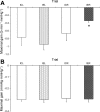Baroreflex and neurovascular responses to skeletal muscle mechanoreflex activation in humans: an exercise in integrative physiology
- PMID: 28855178
- PMCID: PMC5814696
- DOI: 10.1152/ajpregu.00242.2017
Baroreflex and neurovascular responses to skeletal muscle mechanoreflex activation in humans: an exercise in integrative physiology
Abstract
Cardiovascular adjustments to exercise resulting in increased blood pressure (BP) and heart rate (HR) occur in response to activation of several neural mechanisms: the exercise pressor reflex, central command, and the arterial baroreflex. Neural inputs from these feedback and feedforward mechanisms integrate in the cardiovascular control centers in the brain stem and modulate sympathetic and parasympathetic neural outflow, resulting in the increased BP and HR observed during exercise. Another specific consequence of the central neural integration of these inputs during exercise is increased sympathetic neural outflow directed to the kidneys, causing renal vasoconstriction, a key reflex mechanism involved in blood flow redistribution during increased skeletal muscle work. Studies in humans have shown that muscle mechanoreflex activation inhibits cardiac vagal outflow, decreasing the sensitivity of baroreflex control of HR. Metabolite sensitization of muscle mechanoreceptors can lead to reduced sensitivity of baroreflex control of HR, with thromboxane being one of the metabolites involved, via greater inhibition of cardiac vagal outflow without affecting baroreflex control of BP or baroreflex resetting. Muscle mechanoreflex activation appears to play a predominant role in causing renal vasoconstriction, both in isolation and in the presence of local metabolites. Limited investigations in older adults and patients with cardiovascular-related disease have provided some insight into how the influence of muscle mechanoreflex activation on baroreflex function and renal vasoconstriction is altered in these populations. However, future research is warranted to better elucidate the specific effect of muscle mechanoreflex activation on baroreflex and neurovascular responses with aging and cardiovascular-related disease.
Keywords: baroreflex; exercise; mechanoreflex; metabolite sensitization; renal vasoconstriction.
Copyright © 2017 the American Physiological Society.
Figures




Similar articles
-
Renal vasoconstrictor responses to static exercise during orthostatic stress in humans: effects of the muscle mechano- and the baroreflexes.J Physiol. 2006 Jun 15;573(Pt 3):819-25. doi: 10.1113/jphysiol.2005.104612. Epub 2006 Mar 23. J Physiol. 2006. PMID: 16556654 Free PMC article.
-
Healthy older humans exhibit augmented carotid-cardiac baroreflex sensitivity with aspirin during muscle mechanoreflex and metaboreflex activation.Am J Physiol Heart Circ Physiol. 2015 Oct;309(8):H1361-9. doi: 10.1152/ajpheart.00444.2015. Epub 2015 Sep 14. Am J Physiol Heart Circ Physiol. 2015. PMID: 26371168 Free PMC article. Clinical Trial.
-
Muscle mechanoreflex activation via passive calf stretch causes renal vasoconstriction in healthy humans.Am J Physiol Regul Integr Comp Physiol. 2017 Jun 1;312(6):R956-R964. doi: 10.1152/ajpregu.00322.2016. Epub 2017 Apr 5. Am J Physiol Regul Integr Comp Physiol. 2017. PMID: 28381456 Free PMC article.
-
Reflex control of the circulation during exercise.Scand J Med Sci Sports. 2015 Dec;25 Suppl 4:74-82. doi: 10.1111/sms.12600. Scand J Med Sci Sports. 2015. PMID: 26589120 Review.
-
Abnormal cardiovascular response to exercise in hypertension: contribution of neural factors.Am J Physiol Regul Integr Comp Physiol. 2017 Jun 1;312(6):R851-R863. doi: 10.1152/ajpregu.00042.2017. Epub 2017 Apr 5. Am J Physiol Regul Integr Comp Physiol. 2017. PMID: 28381455 Review.
Cited by
-
Assessment of baroreflex sensitivity during isometric handgrip exercise and oscillatory lower body negative pressure.J Taibah Univ Med Sci. 2023 Jan 17;18(4):868-875. doi: 10.1016/j.jtumed.2023.01.007. eCollection 2023 Aug. J Taibah Univ Med Sci. 2023. PMID: 36852235 Free PMC article.
-
Interplay between baroreflex sensitivity, obesity and related cardiometabolic risk factors (Review).Exp Ther Med. 2022 Jan;23(1):67. doi: 10.3892/etm.2021.10990. Epub 2021 Nov 23. Exp Ther Med. 2022. PMID: 34934438 Free PMC article. Review.
-
Exaggerated cardiovascular responses to muscle contraction and tendon stretch in UCD type-2 diabetes mellitus rats.Am J Physiol Heart Circ Physiol. 2019 Aug 1;317(2):H479-H486. doi: 10.1152/ajpheart.00229.2019. Epub 2019 Jul 5. Am J Physiol Heart Circ Physiol. 2019. PMID: 31274351 Free PMC article.
-
The Influence of Exercise and Physical Activity on Autonomic Nervous System Function Measured by Heart Rate Variability in Individuals with Type 1 Diabetes Mellitus-A Systematic Review.Int J Mol Sci. 2025 Jul 23;26(15):7096. doi: 10.3390/ijms26157096. Int J Mol Sci. 2025. PMID: 40806227 Free PMC article. Review.
-
The 2019 New Investigator Review Awards.Am J Physiol Regul Integr Comp Physiol. 2019 Feb 1;316(2):R87. doi: 10.1152/ajpregu.00398.2018. Epub 2019 Jan 9. Am J Physiol Regul Integr Comp Physiol. 2019. PMID: 30624976 Free PMC article. No abstract available.
References
Publication types
MeSH terms
Grants and funding
LinkOut - more resources
Full Text Sources
Other Literature Sources
Medical

